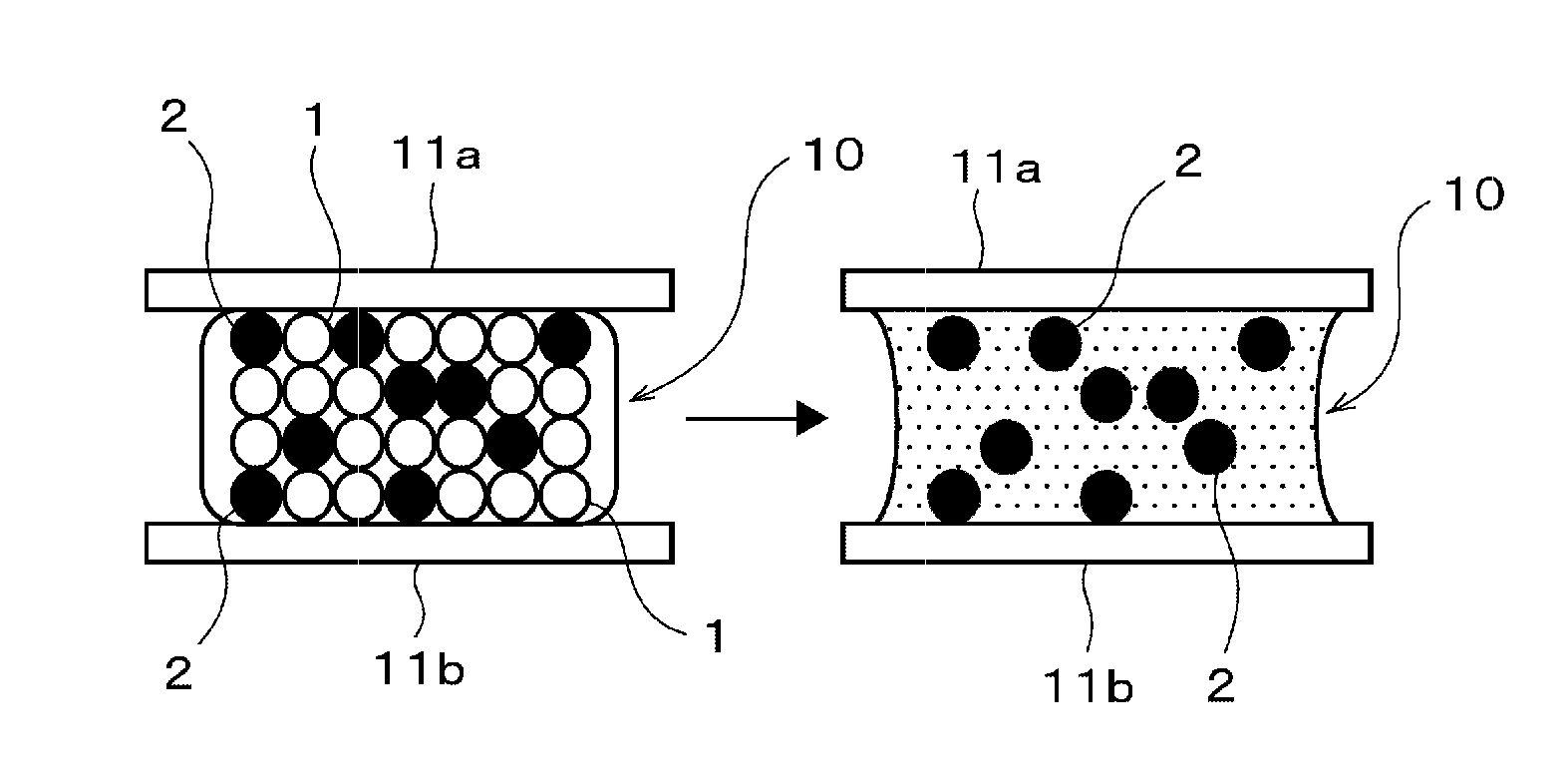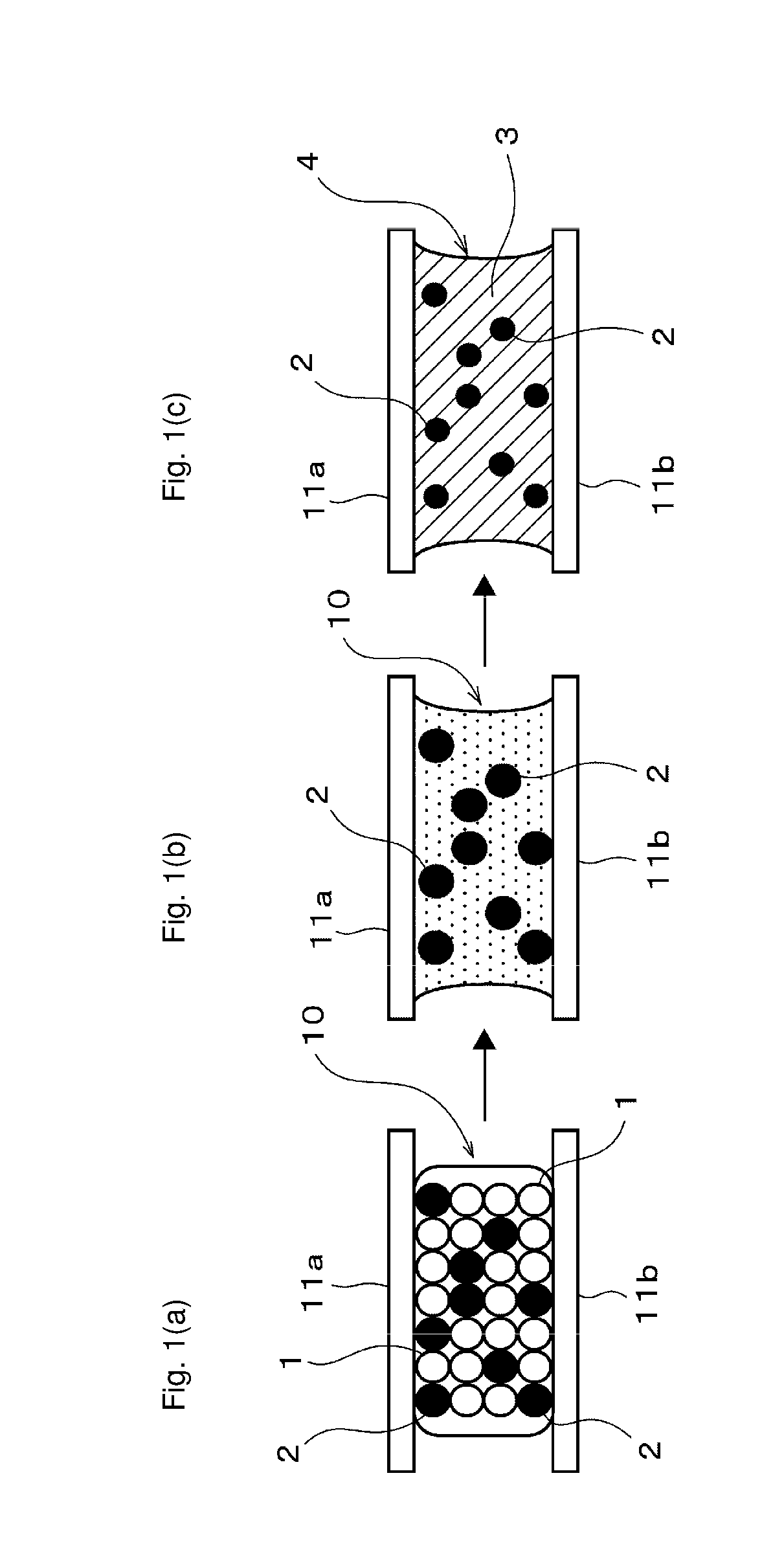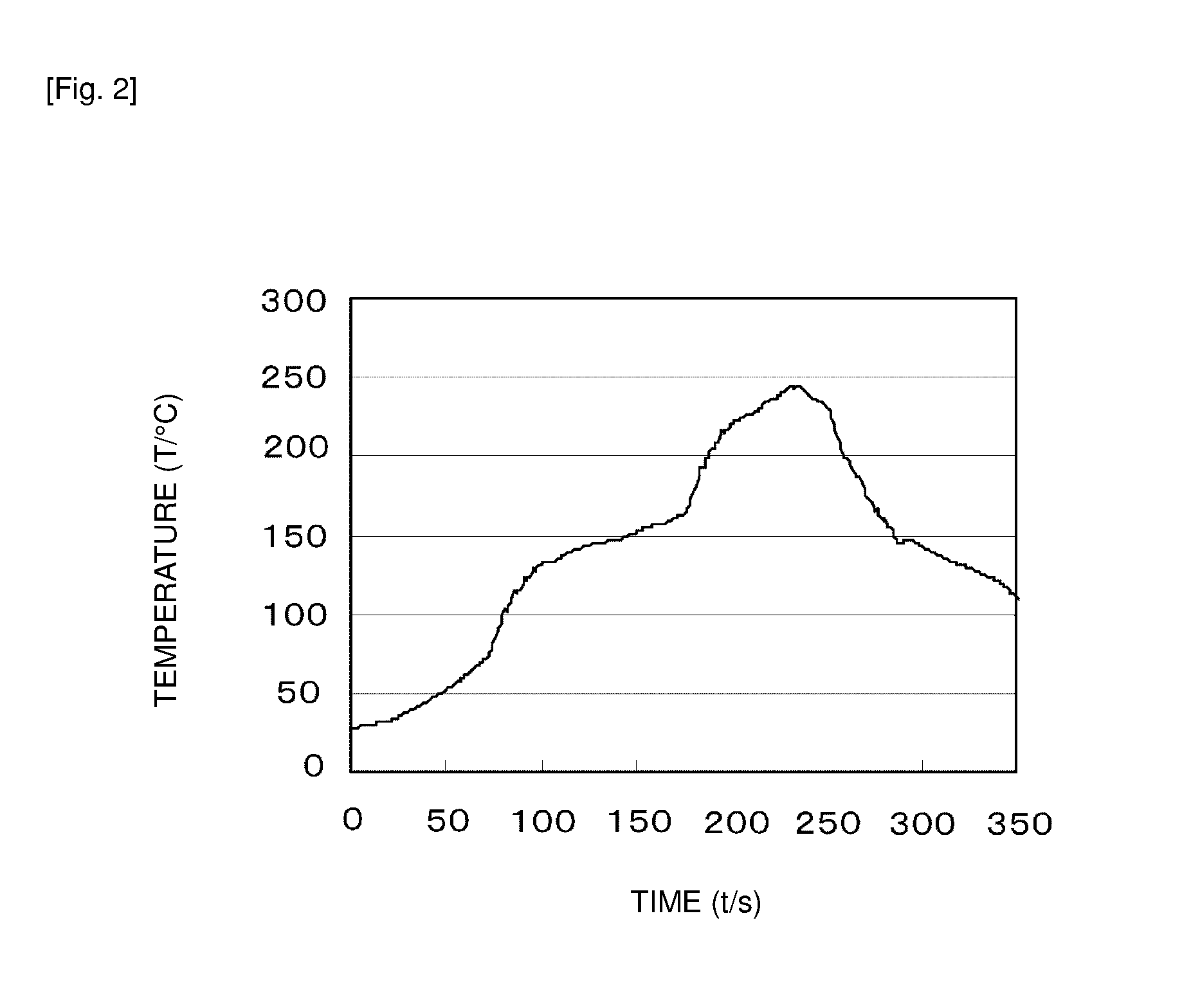Conductive material, bonding method using the same, and bonded structure
a technology of conductive materials and bonding methods, applied in the direction of connection contact material, application, soldering apparatus, etc., can solve the problems of low reliability, unusable products to be bonded, and reduced bonding strength of the solvent paste in which sn remains, etc., to achieve excellent strength, high bonding reliability, and short time
- Summary
- Abstract
- Description
- Claims
- Application Information
AI Technical Summary
Benefits of technology
Problems solved by technology
Method used
Image
Examples
example 1
[0070]In this Example 1, a conductive material was prepared by mixing a powdered first metal (first metal powder), a powdered second metal (second metal powder) and a flux.
[0071]The compounding ratio of the first metal powder and the second metal powder was adjusted so that the volume ratio of the first metal powder / second metal powder was 60 / 40 (i.e. second metal: 40% by volume).
[0072]As the first metal powder, Sn-3Ag-0.5Cu, Sn, Sn-3.5Ag, Sn-0.75Cu, Sn-0.7Cu-0.05Ni, Sn-5Sb, Sn-2Ag-0.5Cu-2Bi, Sn-3.5Ag-0.5Bi-81n, Sn-9Zn, Sn-8Zn-3Bi, Sn-10Bi, Sn-15Bi, Sn-20Bi, Sn-30Bi, Sn-40Bi (Comparative Example), Sn-58Bi (Comparative Example) were used as shown in Table 1. The average particle size of the first metal powder was 25 μm.
[0073]Sn-40Bi and Sn-58Bi of the first metals described above are those of Comparative Examples which do not meet the requirement of the present invention that is “an alloy containing 70% by weight or more of Sn”.
[0074]In addition, Sn-3Ag-0.5Cu of the first metal was u...
example 2
[0105]A powder of Sn-3Ag-0.5Cu was prepared as the first metal powder. The average particle size of the first metal powder was 25 μm.
[0106]Powders of Cu-10Mn, Cu-10Ni and Cu (Comparative Example) were prepared as the second metal powder. The average particle size of the second metal powder was 15 μm.
[0107]As the flux, one having a compounding ratio of rosin: 74% by weight, diethylene glycol monobutyl ether: 22% by weight, triethanolamine: 2% by weight and hydrogenated castor oil: 2% by weight was prepared.
[0108]A conductive material was prepared by mixing the above-mentioned first metal powder, second metal powder and flux.
[0109]The compounding ratio of the first metal powder and the second metal powder was adjusted so that the volume ratio of the first metal powder / second metal powder was 87 / 13 to 57 / 43 (i.e. second metal powder: 13 to 43% by volume).
[0110]For the compounding ratio of the flux, the ratio of the flux to the entire conductive material was 10% by weight.
[0111]For the ...
example 3
[0119]A powder of Sn-3Ag-0.5Cu was prepared as the first metal powder. The average particle size of the first metal powder was 25 μm.
[0120]As the second metal powder, a powder of a Cu—Mn alloy with the ratio of Mn of 5 to 30% by weight and a powder of a Cu—Ni alloy with the ratio of Ni of 5 to 20% by weight were prepared, and a Cu powder was prepared as Comparative Example. The average particle size of the second metal powder was 15 μm.
[0121]As the flux, one having a compounding ratio of rosin: 74% by weight, diethylene glycol monobutyl ether: 22% by weight, triethanolamine: 2% by weight and hydrogenated castor oil: 2% by weight was prepared.
[0122]A conductive material was prepared by mixing the above-mentioned first metal powder, second metal powder and flux.
[0123]For the compounding ratio of the flux, the ratio of the flux to the entire conductive material was 10% by weight.
[0124]The compounding ratio of the first metal powder and the second metal powder was adjusted so that the v...
PUM
| Property | Measurement | Unit |
|---|---|---|
| melting point | aaaaa | aaaaa |
| specific surface area | aaaaa | aaaaa |
| melting point | aaaaa | aaaaa |
Abstract
Description
Claims
Application Information
 Login to View More
Login to View More - R&D
- Intellectual Property
- Life Sciences
- Materials
- Tech Scout
- Unparalleled Data Quality
- Higher Quality Content
- 60% Fewer Hallucinations
Browse by: Latest US Patents, China's latest patents, Technical Efficacy Thesaurus, Application Domain, Technology Topic, Popular Technical Reports.
© 2025 PatSnap. All rights reserved.Legal|Privacy policy|Modern Slavery Act Transparency Statement|Sitemap|About US| Contact US: help@patsnap.com



